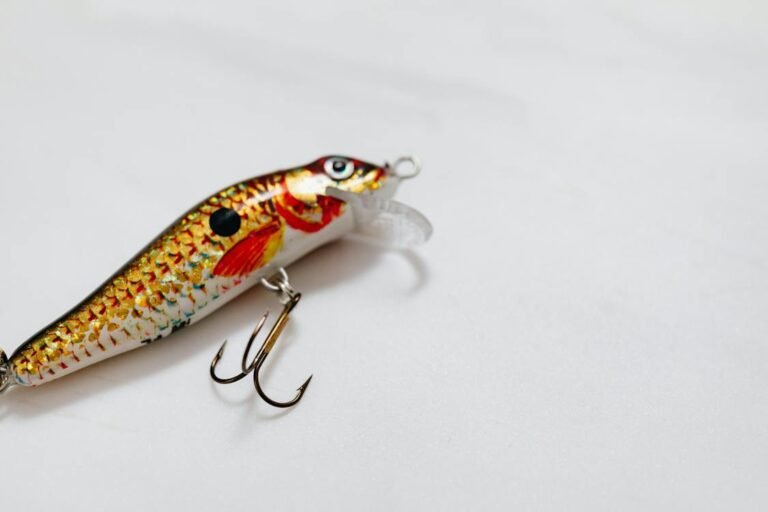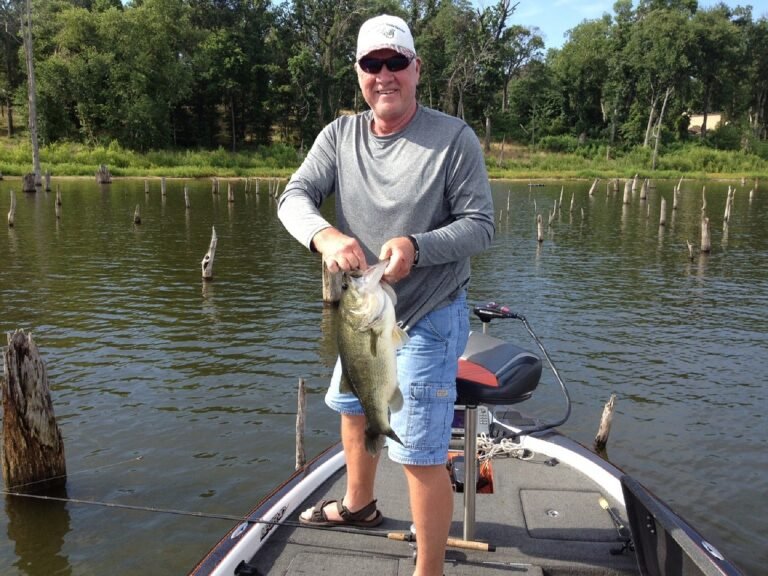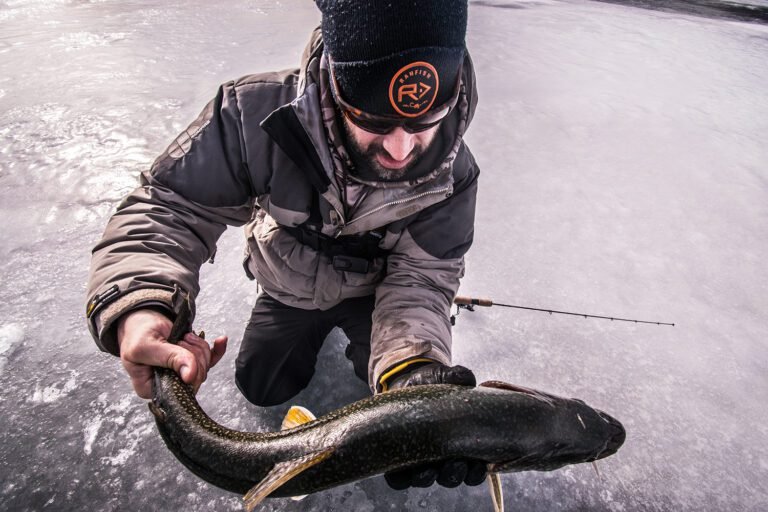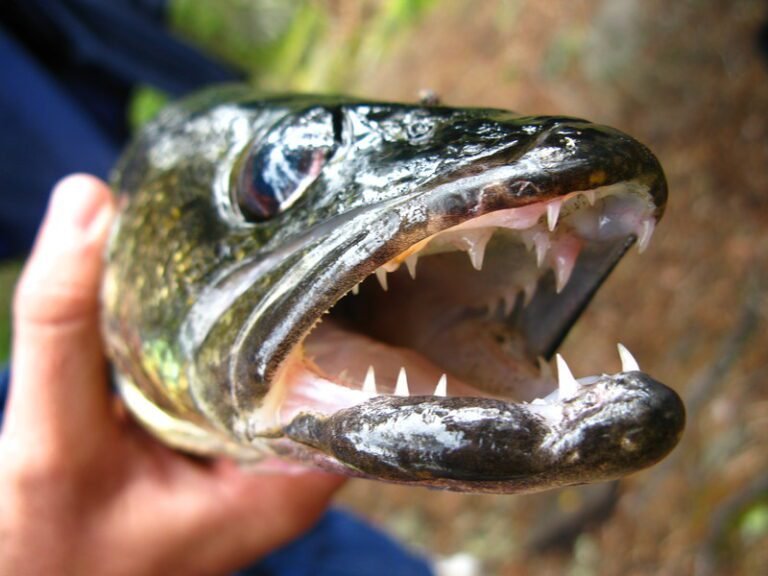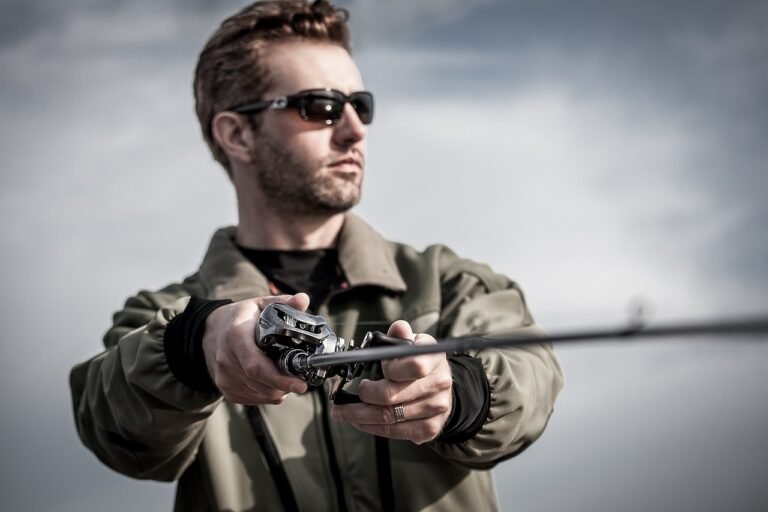A perch rig is a versatile and useful fishing tool widely used by anglers for targeting Perch, a famous and widely distributed freshwater fish. Whether you are an experienced or a newbie angler just starting, the perch rig is an important tool to have in your fishing arsenal.
This article will provide a comprehensive overview of the perch rig in 2024, including how it is constructed, how to tie it, and the best baits and lures to use. We will also discuss some tips and tricks to maximize your chances of success when using the perch rig. Whether you are fishing for Perch in a lake, river, or stream, the information in this article will help you get the most out of your fishing trips. So, let’s get started and learn more about the perch rig!
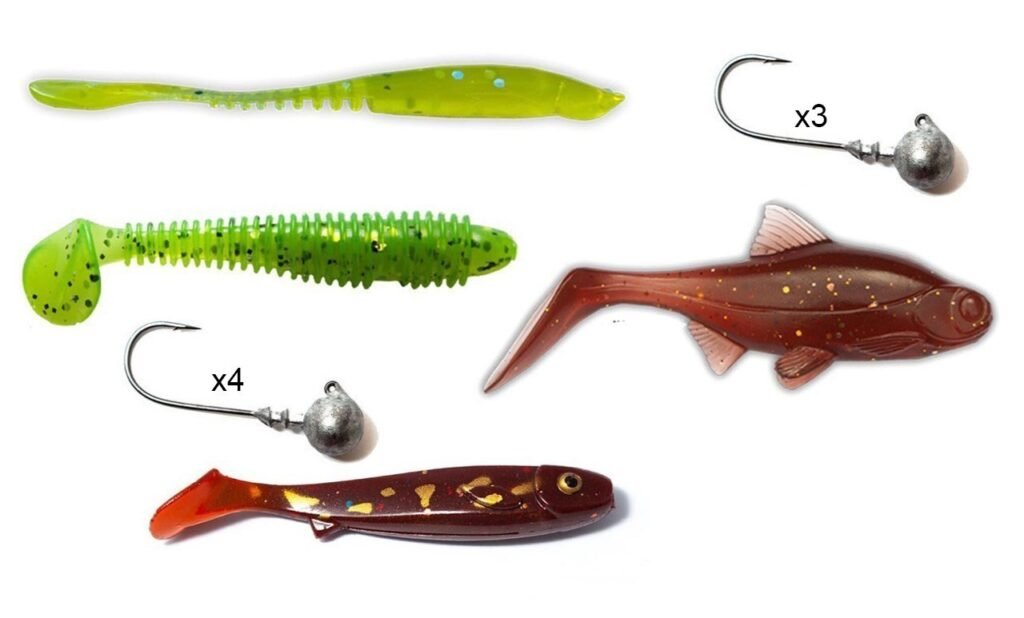
Types of Rigs for Perch Fishing:
There are different types of rigs that can be used for perch fishing, each with its own set of advantages and disadvantages. Here are some of the most popular Perch rigs.
- Jig rig
- Slip bobber rig
- Carolina rig
- Perch pounder rig
Jig Rig For Perch:
The jig rig is a famous and effective option for perch fishing, especially in deep water or when targeting larger Perch. It consists of a jig head with a hook attached, a soft plastic lure, and a weight. The jig head and lure are designed to mimic the movement of a wounded baitfish, which can be very useful in attracting a Perch.
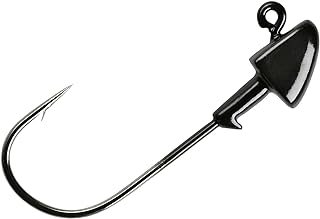
How to tie it: Start by choosing an appropriate jig head and soft plastic lure for the size and type of Perch you are targeting. Lighter jig heads and smaller lures are normally best for smaller Perch, while heavier jig heads and larger lures are excellent for larger Perch.
Next, tie the jig head to your main line using a knot such as a Palomar knot or a uni knot. Slide the soft plastic lure onto the hook of the jig head and make sure it is protected. Connect a weight to the main line above the jig head. The weight will help the rig sink and also helps to keep the jig head and lure in the strike zone longer.
When to use it: The jig rig is very effective for fishing in deeper water, as the weight of the jig head and lure permits it to sink quickly and stay in the strike zone longer. It is also a good choice for fishing in clear water conditions, as the natural movement of the jig head and lure can be very attractive to perch.
The jig rig is also valuable for fishing around cover, such as weeds, rocks, or logs, as the weight of the jig head and lure allows it to sink into the cover and be retrieved slowly, which can trigger bites from Perch. It is also an excellent option for fishing in cold water, as the slow and deliberate retrieval of the rig can be more effective at attracting lethargic Perch.
How to use it: To use a jig rig for perch fishing, cast it out and allow it to fall to the desired depth. Then, retrieve it slowly, using a jigging motion to mimic the movement of a wounded baitfish. It will often trigger a bite from passing Perch. Please pay attention to the movement and action of the jig head and lure as you retrieve it, as this can play a significant role in attracting and hooking Perch.
Always adjust the size and weight of the jig head and lure as needed to match the conditions and target species. Also, be sure to use a reel with a smooth drag system to help land a larger perch. With a little practice and experimentation, the jig rig can be a very effective tool for catching Perch in a variety of different fishing environments.
Advantages of Using A Jig Rig:
There are some advantages to using a jig rig for perch fishing:
- Versatility: This Perch rig can be fished in various water conditions and depths, making it a versatile option for fishing.
- Natural presentation: The jig head and soft plastic lure of the jig rig are created to mimic the movement of a wounded baitfish, which can be very attractive to perch.
- Durability: The jig head and soft plastic lure of the jig rig are normally more durable than other types of baits and lures, which can be helpful when fishing for Perch with sharp teeth.
- Easy to use: This Perch rig is fairly simple to tie and use, making it an accessible option for anglers of all skill levels.
- Effective: The jig rig is known for its effectiveness at catching Perch, especially larger ones.
Slip Bobber Rig for Perch:
Slip bobber rig is also the best perch rig and is the best option to use from shore. It is a simple and effective rig that consists of the main line, a hook or set of hooks, a slip bobber, and a weight or sinker. It allows the angler to easily detect bites and set the hook, making it an excellent option for anglers.
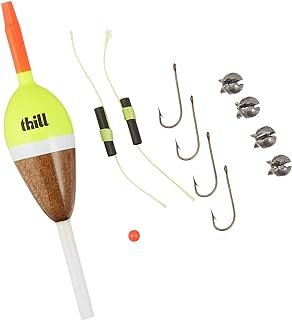
How to tie it: To tie a slip bobber rig for perch fishing, you will need the following materials: a fishing rod and reel, a fishing line, a slip bobber, a swivel, a sinker, and hooks.
First, connect the fishing line to the reel and tie on the swivel. Next, attach the sinker at the bottom of the fishing line using a fisherman’s knot. The sinker will keep the bait in place and allow it to fall to the desired depth.
Then, connect the slip bobber to the line above the sinker. Slide the bobber up the line until it is at the desired distance from the bait. Tie the bobber in place using a knot such as a simple overhand knot or a fisherman’s knot.
Finally, attach one or more hooks to the line below the bobber using a fisherman’s knot. You can use a single hook or a multi-hook rig, depending on your preference. Baited with worms, minnows, or other small baitfish, the slip bobber rig is now ready to be cast into the water in search of Perch.
When to use it: A slip bobber rig is an excellent option for perch fishing in various situations. It is very useful when fishing in deeper water, as it allows you to easily adjust the depth at which your bait is presented to the fish. It can be particularly useful when the Perch are suspended at a certain depth or when you are fishing in a deep hole or channel.
In addition, the slip bobber rig is the right choice when the water conditions change, such as when the wind or current is causing the water level to fluctuate. The adjustable depth of the slip bobber permits you to adapt easily to these changes and present your bait at a sufficient depth.
How to use it: Cast your line out into the water and wait for the bobber to start drifting. When the bobber starts moving, it indicates that a fish has taken the bait. To set the hook, simply reel in the slack line and gently lift the rod tip. The slip bobber will slide down the line, allowing you to feel the fish’s resistance.
It is important to pay attention to the depth at which the fish are biting and adjust the slip bobber accordingly. I would recommend setting the depth of the slip bobber about 6 inches above the bottom. Still, you are not getting any bites. Try moving the bobber up or down the line to find the depth where the fish are feeding.
Advantages of Using A Slip Bobber Rig:
There are several advantages of using a slip bobber rig.
- Versatility: The slip bobber rig can be used effectively in various situations, including when the Perch are feeding on the surface, near the surface, or when the water conditions are changing.
- Adjustable depth: One of the main advantages of a slip bobber rig is that it lets you easily adjust the depth at which your bait is presented to the fish. It can be particularly useful when the Perch are suspended at a specific depth or when you are fishing in a deep hole or channel.
- Sensitivity: The slip bobber rig allows you to feel the slightest nibbles and bites, making it more straightforward to detect when a perch has taken the bait.
- Easy to use: The slip bobber rig is a simple setup that is easy to use and requires minimal equipment. It makes it a perfect choice for both beginner and professional anglers.
Carolina Rig for Perch:
The Carolina rig is a popular fishing rig often used to catch larger fish species, such as bass and catfish. However, it can also be effective for perch fishing in certain situations. It consists of a weight attached to the main fishing line using a swivel, a bead, a leader line terminated with a hook or lure, and bait or a lure attached to the hook or lure.

How to tie it: First, attach the swivel to the main fishing line using a fisherman’s knot. Then, thread the weight onto the line, followed by the bead. The weight and bead should be positioned a few inches apart. Next, attach the leader line to the swivel using a fisherman’s knot. The length of the leader line can vary, but for perch fishing, a shorter leader of around 6-12 inches is usually sufficient.
Tie the hook or lure onto the leader line’s end using a fisherman’s knot. If you are using bait, attach it to the hook or lure using a bait holder or by threading it onto the hook. Now, you are good to go!
When to use it: The Carolina rig is a great option to use from shore or a boat. It can be useful rig in deeper water, but it may be less effective in shallower or more active environments.
How to use it: Once your Carolina rig is assembled, cast it out into the water and allow the weight to fall to the bottom. Slowly retrieve the line, occasionally pausing to allow the bait to hover in front of the Perch. You can gently shake the rod tip to give the bait a more natural presentation. Pay attention to the feel of the line and any movements or bumps, as these can indicate a bite. Set the hook and reel in the Perch when you feel a bite.
It is important to pay attention to the depth of the water and the behavior of the Perch when using a Carolina rig. Adjust the weight and leader length as needed to target the depth where the Perch are feeding.
Advantages of Using a Carolina Rig:
The advantages of using a Carolina rig are as follows:
- Natural Presentation: The Carolina rig allows the bait to move more naturally in the water, which can be more attractive to the Perch.
- Adjustable: The rig’s weight can help keep the bait in place, making it easier for the Perch to locate and bite.
- Effective: The rig is typically used in deeper water, where the Perch are more likely to hold on or near the bottom.
- Easy to use: The Carolina rig is relatively simple to set up and use, making it a popular choice among anglers of all skill levels.
- Versatility: The Carolina rig can be used with a variety of different baits, including live bait or artificial lures. This versatility allows anglers to tailor their setup to specific fishing conditions.
Perch Pounder Rig for Perch:
A perch pounder rig is another great option when targeting Perch. It is ideal for vertical fishing from a boat. It is normally used in rivers, lakes, and other bodies of water where Perch are found. It consists of a mainline, a sinker, a swivel, and one or more hooks.

How to tie it: Start by attaching a sinker to the main line using a fisherman’s knot, such as the improved clinch knot or the uni knot. Placing the sinker about 18 inches above the hook would be best. Next, attach the swivel to the main line using a fisherman’s knot, positioning it about 8 inches above the sinker.
Then, attach the hook to the end of the main line using a fisherman’s knot. At last, add bait to the hook. Live bait, such as worms or minnows, can be a good option when fishing for Perch, but you can also use artificial lures or flies.
When to use it: Many experienced anglers use Perch pounder rigs in deeper water, as the sinker can help to keep the rig near the bottom where Perch are often found. The rig is also well-suited for fishing in moderate to strong currents, as the swivel helps prevent the line from tangling.
How to use it: First, assemble the rig according to the instructions given above. Once the rig is assembled, cast it into the water and wait for a perch to bite. As you wait for a bite, you can adjust the rig’s depth by moving the sinker up or down the main line. You can also experiment with different types of bait to see what works best in the particular body of water you are fishing in.
When a perch is hooked, gently reel in the line, being careful not to pull too hard and break the line. Once the Perch is close enough, use a fish landing net or gently remove the hook by hand.
Advantages of Using a Perch Pounder Rig:
The several advantages of a perch pounder rig are:
- Bait options: The perch pounder rig allows you to use a variety of bait, including live bait, artificial lures, and flies. It can be valuable if you are fishing in a body of water where Perch are selective about what they will bite.
- Customization: The perch pounder rig is customizable, permitting you to adjust the rig’s depth by moving the sinker up or down the main line.
- Effectiveness: The perch pounder rig is an effective fishing rig specifically designed for catching Perch. The sinker helps to keep the rig around the bottom of the water where Perch are usually discovered, while the swivel helps to prevent the line from tangling.
- Easy to use: The perch pounder rig is relatively simple and easy to use, making it a good choice for anglers of all skill levels.
- Versatility: The perch pounder rig is a versatile fishing rig that can be used in various fishing situations, including rivers, lakes, and ponds. It is also appropriate for fishing in deeper water or areas with moderate to strong currents.
FAQs:
what is the best perch rig?
The slip bobber rig is a type of fishing rig that is often considered to be the best overall rig for perch fishing because of its versatility and effectiveness. It is very easy to use and is suitable for all anglers. It is also inexpensive, making it a very affordable option for those who are new to perch fishing.
how long should a perch rod be?
The length of the perch rod will depend on the type of water you are fishing in. In general, perch rods range in length from 6 to 8 feet. For most perch fishing situations, a rod that is 7 to 8 feet long will be suitable. A longer rod will give you more casting distance and allow you to fish in deeper water, while a shorter rod will be easier to handle and more sensitive, making it easier to feel the bite of a perch.
Conclusion:
In conclusion, the perch rig is a type of fishing rig that is specifically designed for catching Perch. There are several types of perch rigs to choose from, including the perch pounder rig, Jig rig, Carolina rig, and slip bobber rig, each with its own set of advantages and disadvantages.
A perch rig is a valuable tool for anglers who are targeting Perch and can help to make the fishing experience more successful and enjoyable.

